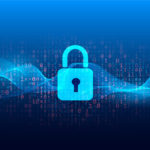The sudden transition to remote work has left many businesses scrambling to establish policies and security protocols. Companies are moving toward long-term remote work arrangements, requiring advanced safeguards against cyberattacks and data breaches.
What measures does your business need to adopt to secure your employees’ remote access for the foreseeable future? Today we’ll review remote work security tips you should incorporate to ensure your company’s safety.
BENEFITS OF REMOTE WORKING
Employees have reported surprising benefits from working remotely. Besides newly flexible work schedules, several perks make the extra security precautions worthwhile:
- Increased employee retention and productivity
- Reduced interruptions by coworkers
- Reduced company overhead costs
- Increased family time due to commute elimination
TOP REMOTE SECURITY RISKS FOR BUSINESSES
Remote workers are typically the first to face security threats. They’re often the source of network security incidents that can ripple quickly through the rest of the organization. Even if you don’t have remote employees, mobile devices like smartphones and laptops pose security risks.
These are the top remote work security issues businesses should be wary of.
Managing All Devices and Employees
Do you know what equipment is being used, and by whom? Having an up-to-date inventory of devices and their users is critical to safety monitoring.
Insecure Passwords
We cannot overstate the importance of setting up password restrictions. Instituting a system of regular, forced password changes is a simple step that many businesses miss.
Phishing Emails
Criminals who specialize in phishing scams lure individuals into providing sensitive information, including banking, credit card and password information. Individuals and businesses lost more than $3.5 billion in 2019 from email phishing scams.
Using Unsecured Personal Devices & Networks
Everyone from freelancers and full-time employees to consultants and partners is working on a slew of unsecured devices in a mash-up of operating systems and networks. As a result, they’re more vulnerable to network threats that are less common in the office.
Video Attacks
Popular video app Zoom has been under scrutiny for a surge in “Zoom-bombing,” in which hackers hijack video meetings to spread malicious content. Make sure you take precautions to keep your video calls safe.
Weak Backup and Recovery Systems
A good offense is the best defense. In a worst-case scenario, having a reliable backup and recovery system can save your business. Having a team of experts to take you from a break-fix mentality to a proactive maintenance schedule is worth its weight in gold.
Read: Why Your Business Needs a Network IT Assessment
REMOTE SECURITY BEST PRACTICES FOR EMPLOYERS
A strong remote security policy is critical to daily operations and network resilience. Here are some tactics employers can take to protect their data no matter their location.
1. Migrate your business applications to the cloud
Cloud applications like Office 365 and QuickBooks Online offer 24/7 access. They include updated security features that are compliant with industry regulations.
2. Require employees to connect over VPNs.
Virtual public networks, or VPNs, are similar to firewalls. They are one of the most popular security tools for remote workers because they protect laptop data online while retaining the same security, functionality and appearance as if they were within the company network.
3. Install multi-factor authentication.
Many businesses resist instituting multi-factor authentication because, honestly, it’s a hassle. Waiting for an authentication code is a step many people would rather not take. However, this one practice is remarkably effective in preventing security breaches.
4. Implement BYOD/MDM policies.
Enforcing BYOD (bring your own device) and MDM (mobile device management) policies protect users from a range of attacks.
5. Use password managers.
Require employees to use encrypted password software to ensure password safety. Popular password managers include:
6. Train employees on best practices.
Create clear security guidelines for your employees so they understand how to protect themselves and their data.
REMOTE SECURITY BEST PRACTICES FOR EMPLOYEES
Users can become complacent about cybersecurity practices. They often assume your company’s IT department takes responsibility for protecting them even outside of the office.
Employees are your first line of defense against cybersecurity attacks. Here are a few security best practices your remote employees should follow.
7. Run software updates regularly.
Whether employees are using company equipment or their own devices, make sure they know how to run software updates. Software updates or patches can include new or enhanced features, improve software stability, add security measures, and remove outdated features. Activate automatic updates on all remote devices to deploy patches regularly.
8. Secure video meetings.
Using Zoom for your video meetings? Keep the following tips in mind to secure your Zoom meetings:
- Consider only using paid accounts to gain access to advanced security features
- Use a unique ID and password for calls
- Create a waiting room to prevent people from joining calls unexpectedly
- Make sure only hosts can share their screen
- Lock a meeting once it begins
9. Watch out for email phishing.
Don’t open or click on suspicious emails. Cybercriminals use phishing to entice users to share data and login credentials, typically through an email, instant message or text message. While IT security measures can help, phishing defense starts with employee awareness.
10. Create strong passwords.
Unique passwords are a necessary security precaution many employees fail to take seriously. Don’t rely on easily hacked passwords (like “password123”).
11. Never leave your bag, briefcase or laptop unattended.
Leaving your laptop unattended can compromise data and cause serious security headaches. Always lock your devices when not in use.
12. Use caution with wireless networks.
Unsecured networks make it easier for cybercriminals to access emails and passwords. Don’t work from a coffee shop or other public space unless absolutely necessary.
13. Keep your work separate.
Thirty to forty percent of employee internet activity is non-work-related, affecting not only productivity but inviting security threats. A company laptop is for an employee’s business use only. Personal tasks should be done separately from a business laptop or other mobile device.
Amp up Your Organization’s Cybersecurity with Helixstorm
Cybersecurity for remote workers requires constant vigilance. If you’re nervous about your current remote security policies, give us a call. We’ll assess and implement the precautions necessary to ensure your remote employees can work safely and productively.
At Helixstorm, we’re committed to excellent customer service and continuously strive to exceed your expectations. Our certified engineers are dedicated to solving your business challenges – 24 hours a day, seven days a week.
Contact us today to chat about how our managed IT support services can help build your future securely.


